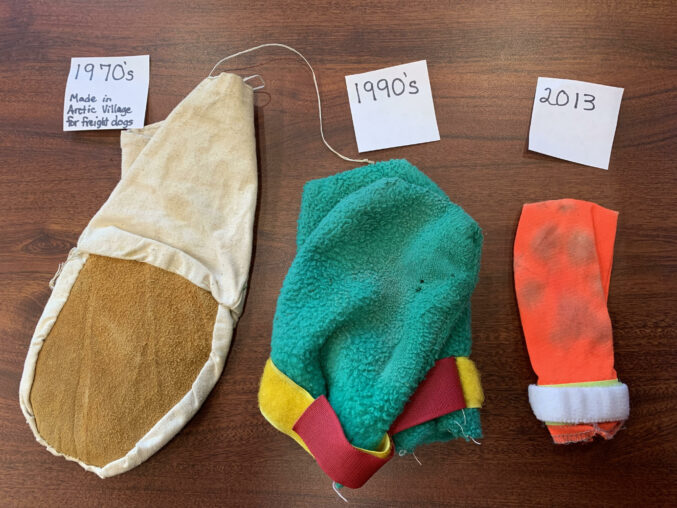Today was the first day of the Iditarod Education Winter Conference. Educators from around the U.S. got together to share ideas and listen to some amazing speakers. I know I came away with some new ideas, and I hope everyone else did, too. My post today tackles one of the Depth and Complexity concepts: trends over time.
The idea of trends over time is just a fancy way of saying how things change. Some changes are barely perceptible, like the movement of a glacier, and some changes are rapid. Some changes pivot back and forth as the thinking changes. Have your students look for this concept in every subject. I’ll share what I mean when I describe the presentations. I will start to think of ways to apply this concept to the Iditarod, and then you can take off from there!
Jane Holmes went first with an introduction that helped conference participants get their bearings. I presented next. My lesson showed teachers how easy it is to teach DNA sequencing to students using sled dogs. Alaskan husky sled dog genetic lines are very important. Each musher’s kennel has a special set of characteristics they are looking for. In researching for this lesson, I learned that geneticists have been able to pinpoint the DNA that makes sled dogs more suited to sprint racing or for distance racing. There are a couple of “trends over time” ideas here: one, the development of genetic science that enables us to locate all the traits on a DNA strand, and two, how Iditarod canine athletes have become better over time. Are there others you can find?

The different kinds of dog booties over time: canvas and moose hide, fleece, and cordova fabric. Photo: K. Newmyer
We heard next from Erin Montgomery, 2014 Iditarod Teacher on the Trail(TM). She is a whiz at technology and shared with us how A.I. can help teachers deliver high quality learning activities. I remember when A.I. was an amazing science fiction concept. Now A.I. is being used everywhere. Some may be skeptical of it, but I think Erin did an amazing job of showing how A.I. can be used correctly to enhance learning about the Iditarod and lots of other topics. This is definitely a huge trend over time–the addition of layers and layers of technology in the education world!

Part of the huge data chart from the 2010 race. Photo: Iditarod Media
You can extend that to how technology in the Iditarod has changed, as Dr. Liz Millman described with the Return Dog Program. Many dogs, about a third of Iditarod athletes, leave the race for one reason or another. Usually these reasons are for minor things. When a dog comes off the trail, it is in great care with experienced handlers until it is safely back at Anchorage, where representatives from the musher’s kennel pick the dog up. Dr. Millman described how when she first took over the program, technology wasn’t being used. A volunteer helped develop an online database for veterinarians to use instead of cumbersome phone calls back and forth. Going further, you can also think about how dog care has improved over time. What other dog-related trends over time can you discern?
Emily Krol from the Jr. Iditarod board spoke after lunch. Her talk was inspiring, as she shared her journey as a musher. She recently returned to competitive mushing herself, but what really stood out to me is that she is a coach, like a basketball coach, for teenage mushers completing the Jr. Iditarod. She gets to watch the development of these young mushers from age fourteen to age seventeen. There are lots of ways to apply the trends over time concept here–especially when we think of students growing as young persons, improving their race times, and gaining sponsorship and recognition.

Marking correct musher-in times. Photo: Iditarod Media
The last presenter of the day was Keeli Cullen, 2024 finalist, and she shared the Iditarod lessons that she does with her preschool class at the nature school. One of the concepts she is teaching four and five year olds is–you guessed it–trends over time. Before the Iditarod, she has the students create paper chains, a calendar, and use counting markers to mark the passage of time counting down to the start of the Iditarod. The calendar is really the fun part, and any teacher could do this, no matter the grade level. In addition to marking the days off on a huge wall calendar starting in January, she also adds postcards from the Iditarod Postcard Project, photos, and student artwork to enhance the appeal and value of the calendar. Not only are students able to count down to the race, their engagement rises as more and more photos and drawings are added to the calendar wall.
According to Ian Byrdseed, the way to implement any Depth and Complexity concept well is to combine it with another higher level thinking skill on Bloom’s Taxonomy. For example instead of just asking, what are ways the Iditarod has changed over time, ask students to compare and contrast the first set of rules to the ones being used today. Get students to share their opinions of how things changed or evaluate the reasons for the change. For example, what was some of the thinking behind changing the number of dogs a musher can start with back from fourteen to sixteen?
How will you use the Iditarod to get students thinking about change over time? Email me at emailtheteacher@iditarod.com.


